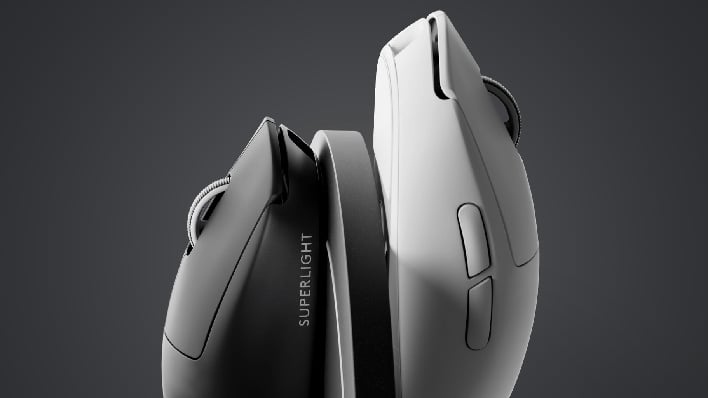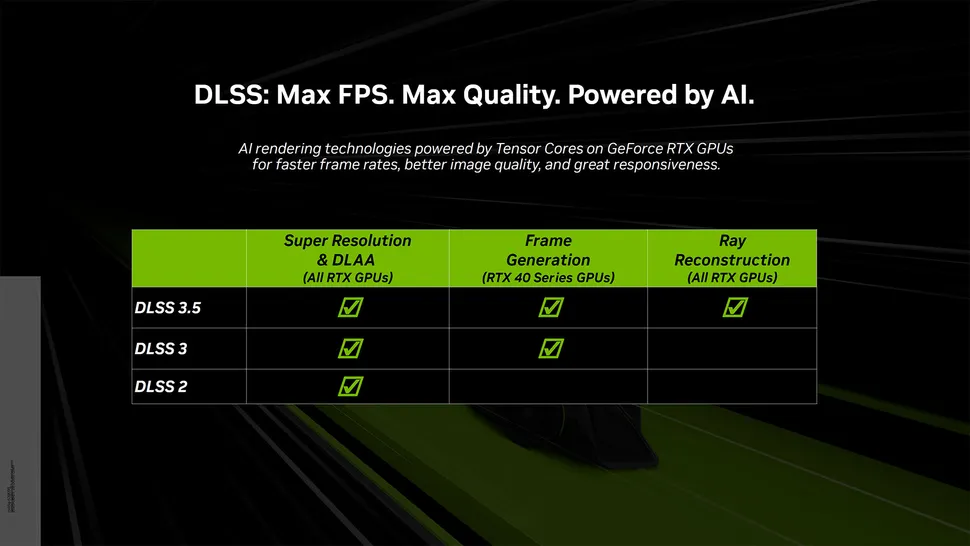-
Dragi članovi, prochitajte OVU vest u vezi nove teme!
-
 Molimo vas sve da pročitate PRAVILA FORUMA i da se istih pridržavate.
Molimo vas sve da pročitate PRAVILA FORUMA i da se istih pridržavate. -
Secret Level Discord server je LIVE! Za više informacija kliknite OVDE
You are using an out of date browser. It may not display this or other websites correctly.
You should upgrade or use an alternative browser.
You should upgrade or use an alternative browser.
Hardware General (vesti/konferencije/glasine)
- Thread starter Undenis
- Start date
grunt
Celeb Connoisseur
Gledam novi DF direkt i dosao segment za ovaj novi Intel tool, bas je super lepo prezentovano da skontas gde je bottleneck. Konacno malo alternative za msi afterburner 

 game.intel.com
game.intel.com


Intel® Arc™ Graphics - PresentMon
A new gaming performance overlay and telemetry application to monitor and measure your gaming experience.
Omega
PS5 je đubre

As AMD struggles to put out FSR 3, Nvidia already has DLSS 3.5 (ray reconstruction) ready
While it was expected of AMD to have an alternative to Nvidia's DLSS 3 by now with its FSR 3, Team Green is all set to one-up Team Red once more with its new DLSS 3.5 ray reconstruction tech.
- Messages
- 7,823
- Reaction score
- 11,214
- Points
- 503
Alan Wake 2, Cyberpunk 2077, Cyberpunk 2077: Phantom Liberty, Portal with RTX, Chaos Vantage, D5 Render, and NVIDIA Omniverse will all be adding/launching with DLSS 3.5 this fall.
I ovaj Ray Reconstruction izgleda dosta smanjuje denoising shimmer [vidljivo u portal rtx snimku].
I ovaj Ray Reconstruction izgleda dosta smanjuje denoising shimmer [vidljivo u portal rtx snimku].
2CR4ZY
Forumski Apotekar
Nisu, biće usb type-cNe udubljuje mi se. Imam prvi, odlican je ali ako si opet stavili micro usb, crkli da bog da.
Sent from my Samsung Galaxy Z Flip 4 using Tapatalk

Logitech G Pro X Superlight 2 Wireless Gaming Mouse Breaks Cover With Several Upgrades
Logitech is creating a sucessor to the G Pro X Superlight that's lighter, more accurate and has far better battery life.
- Messages
- 7,823
- Reaction score
- 11,214
- Points
- 503


FSR3 ce biti dostupan za sve graficke i nove konzole. Stize u prve igre za par nedelja [Forspoken i Immortals of Aveum] sa dosta prijavljenih timova za integraciju, a pocetkom sledece godine ce FSR3 biti dodat u Hyper RX servis u Radeon Driveru za koriscenje u svim DX11 i DX12 igrama. Videcemo da li ce ovakav pristup biti losiji u poredjenju sa dev integracijom.
Ako FSR3 bude dostupan kao post-process korak, onda ce verovatno stici [oficijelno ili preko modova] na Steam Deck [bolje na ROG Ally posto on ima 120hz ekran, a AMD preporucuje base 60+ fps].
edit - Utisci DF-a:
In terms of fluidity and clarity, FSR 3 looked a match for DLSS 3 - a view shared by Alex, Rich and John, who were all present to see the demos in person. A great start for FSR 3.

AMD reveals long-awaited FSR 3 tech and frame gen for every DX11/DX12 game
DF goes 'eyes on' with FSR 3 - and a new AMD frame-gen solution that works with every DX11 and DX12 game.
Videli su i opisali su kako radi Fluid Motion tech koji ce radeon driver dodavati za sve DX11 i DX12 igre. Posto je post-process efekat, servis nece imati pristup motino vektorima od engine-a vec ce samo raditi optical flow analizu.
After the FSR 3 demo, AMD wanted us to show us something new and very interesting. Prefaced with the caveat that there will be obvious image quality issues in some scenarios, we saw an early demo of AMD Fluid Motion Frames (AFMF), which is a driver-level frame generation option for all DirectX 11 and DirectX 12 titles. We saw it demonstrated on The Last of Us Part 1... and it works.
This is using optical flow only. No motion vector input from FSR 2 means that the best AFMF can do is interpolate a new frame between two standard rendered frames similar to the way a TV does it - albeit with far less latency. The generated frames will be 'coarser' without the motion vector data but the effectiveness of those frames will scale according to content and the base frame-rate. A slower moving game, for example, makes it easier to interpolate content as there is less difference between the two standard rendered frames. Meanwhile, the higher the base frame-rate, the less time a generated frame persists on-screen - with the lower quality interpolated frames 'strobing' between standard rendered frames. Typically, all frame-gen solutions benefit from higher base frame-rates, but this is especially important with AMFS.
However, what we saw in the demo was clearly worthwhile. The bottom line is that we did indeed see The Last of Us Part 1 running at circa-160fps and higher, albeit with v-sync off, so there was screen-tearing (we suspect this is because it was running outside of the screen's VRR range). Right now, AFMF works with v-sync off, but AMD is looking to add v-sync support. Initially, AMD asked us not to share our thoughts on AFMF until closer to release, but a little while later, we received word that we could talk about it - excellent news! We also received a series of data points on the technology.
First, AFMF can provide frame-rate improvements in excess of 90 percent, depending on the hardware and the game. AFMF is intended to be run on games that are already able to hit a smooth frame-rate (70fps, for instance), with the goal of maxing out a 120Hz or 144Hz panel, with higher frame-rates resulting in higher image quality, for the reasons previously stated. Similar to the Radeon Boost driver-level dynamic resolution scaling feature, the tech is automatically disabled in response to rapid mouse movement, presumably to prevent obvious visual anomalies that will occur in frame generation when the two source frames have so little in common.
AMD was a little guarded when they showed us the TLOUp1 demo, because it was early and an optical flow-only solution will not match the quality of FSR 3 or DLSS 3 in most content. This is a tech with obvious limitations. Outweighing that, we think, is the fact that it should work with any DX11 or DX12 game - and one of the best things about PC gaming is the wealth of options given to users. And soon we'll have another, potentially potent one. The only slight downer? AMD is integrating it into its HYPR-RX package, which is exclusive to RDNA 3 GPUs - a touch strange bearing in mind that FSR 3, the more complex frame-gen solution, is more broadly compatible.
Even so, we were genuinely excited by the AFMF concept because it's another feature available to gamers that'll find utility on high refresh rate screens, which are basically the norm in the PC market these days. AMD is perfectly clear about the strengths and weaknesses of AFMF and at the very least, RDNA 3 users will have a fascinating new tool to experiment with. At best, you have an 'after-market' frame generation solution that could work really well on a huge number of games. Then there's the Asus ROG Ally - a handheld with RDNA 3 graphics and a 120Hz VRR screen, where the artefacts could well be far less noticeable. Again, we should stress that we were 'hands off' for this demo, so the proof of the pudding will be in the tasting/testing, but we're certainly looking forward to checking it out.
Last edited:
2CR4ZY
Forumski Apotekar
Bogme, savrsena tastatura... perfect form factor jer taman staju i arrow keys, kao i F1-F12 keys i zvuci apsolutno predivno, veoma tiho i zarazno.
Tu su i pgup, pgdw, taman tamo gde je pogodno, steta sto nije i home i end i sto je mali enter...
Znaci ne razumem... sto smanjuju enter da bi stavili onaj taster koji niko ziv ne koristi, takodje ni desni shift u zivotu nisam pritisnuo, koja je i svrha desnog alt-a, control-a, veoma upitna... radije bi izbacio te tastere koje skoro niko, skoro nikad ne koristi i ubacio nesto korisnije.
Nisu opticki switchevi koliko vidim i nije wireless... jbg ipak nije savrsena...
On the positive side, rgb postoji i na ivicama tastature, pa baca osvetljenje i na sto.
Jedino sto je skupa, 200 evrica...
Last edited:
Ja tako imam utisak za ovo moje, g613, kao da je rus pravioMoja sledeca tastatura ce verovatno biti neki dasKeyboard [brown switches], ali trenutna ce verovatno potrajati jos dosta [CM Masterkeys Pro L].
 Ima da traje 300 godina
Ima da traje 300 godina 

